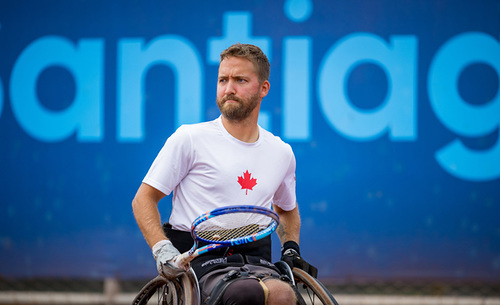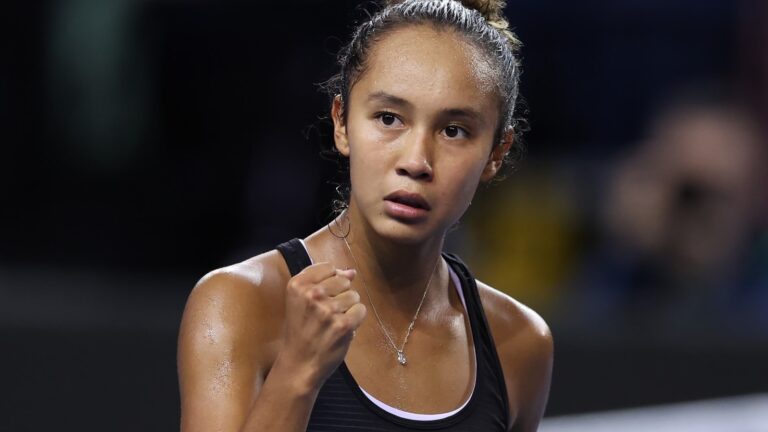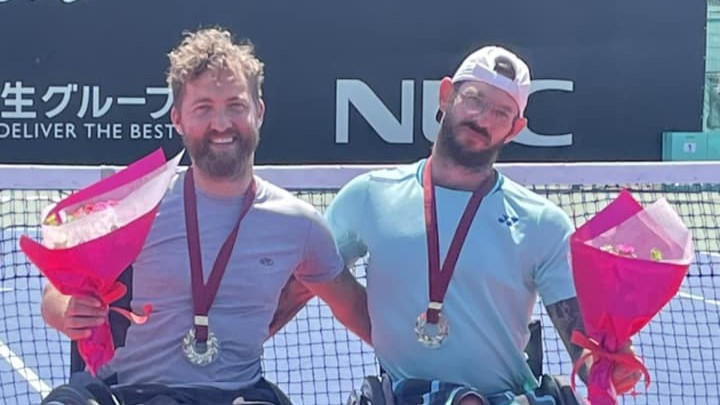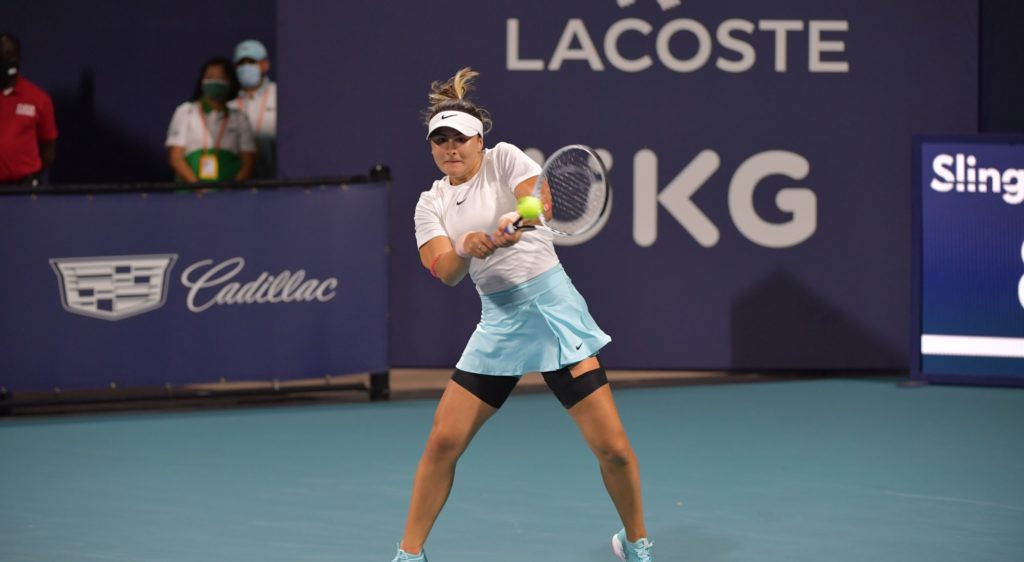
Photo: Storms Media Group
It isn’t Bianca Andreescu’s first fresh start of 2021 but it just may be the right one—if she can keep injuries at bay.
Bianca’s coach Sylvain Bruneau is following his protegee closely from his home base in Montréal. He gave me some insight into why he skipped Miami and the current reality of the World No. 9.
First, he explained why Bianca’s return to tennis in Australia was a bit of a challenge. Like many of the athletes and coaches who deplaned in Melbourne, Bruneau had to comply with an immediate 14-day quarantine after he tested positive for COVID-19.
“Spending 14 days in quarantine and going right into an event—one that just happens to be a major—is huge,” he insists. “You spend two weeks in a hotel room without ever stepping foot onto a court. You train in your room, without a fitness coach and with virtually no equipment. The reality is just TOTALLY different. Then, five days after you’ve left your room, you have to play a tournament. For Bianca, there was a dual objective in Melbourne. Besides the competition, we wanted to use the days leading into the tournament as training time, since she had been in recovery and hadn’t been active in such a long time. We expected a standard quarantine in Melbourne during which she could have trained five hours a day—and we needed it—but that’s not how things went.”
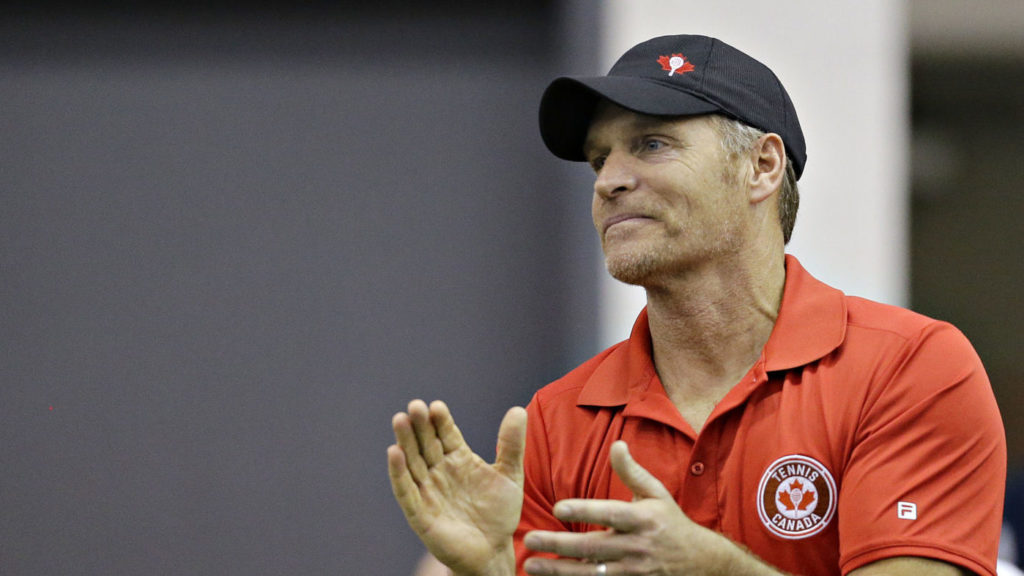
On the heels of a swift and disappointing exit after losing her second match to No. 71 Su-Wei Hsieh of Taiwan (6-3, 6-2 in 83 minutes), Andreescu got her sea legs at the WTA 250 Philip Island Trophy, where she won three straight matches before falling to No. 50 Marie Bouzkova of the Czech Republic in three sets.
Then, instead of heading to the Arabian Peninsula to play Doha and Dubai, the team decided it was best to take things slow and head back to Toronto to rest and train. Of course, coming back to Canada meant another quarantine.
“That quarantine wasn’t as tough because she didn’t have to play back-to-back events as soon as her time was up,” says Bruneau. “She had three whole weeks to start training again and find her form and her game. She came back better prepared, less rushed. And I just want to point out that there’s a reason why there were so many injuries in Melbourne,” he comments, revealing more of the rationale behind the safe strategy.
As for Miami, Bruneau couldn’t make it work because of geography, time and, above all, family.
From November to February, Sylvain Bruneau spent three months on the road. Heading to Miami for just one event would have meant another quarantine before the clay court season. Electing not to go was the logical choice, especially since he can count on an assistant, so to speak.
“In Miami, besides her fitness trainer and a physiotherapist, I can rely on Quebecer Isade Juneau, who also happens to be Bianca’s hitting partner. He was with me in Australia and knows Bianca’s game so well. We speak every day. He’s continuing the work we started a few weeks ago, and I trust him completely,” says Bruneau.
Bianca Andreescu can bank on Bruneau’s presence throughout the entire clay season. Then, he’ll be back in Montréal for a few weeks during the grass court lead-ins and go to Wimbledon. He’ll also travel for the North American hard court tournaments.

In the short and medium terms, there is a clear plan to get Bianca back to fighting fit. Predictably, the goal in Miami isn’t necessarily to raise the winner’s trophy.
“Of course, there are objectives in Miami,” affirms the 55-year-old coach. “Those goals are related to tennis, to the things we want to improve before and during the tournament. There are also goals related to how she’s feeling. Are there set objectives in terms of performance? No, not at all. We’re really working on finding her game. Fifteen months is a long time to be out, and her return in Australia was anything but productive, as we talked about earlier. So, no, it’s not about getting to the semis or the final or winning.”
Though it’ll be a different story on clay, the objectives will still be focused on how she’s feeling the game.
“We may raise our expectations, but it’s still too early to decide. When she gets to the clay courts, she’ll only have competed in three tournaments in over 18 months, so thinking about winning in Madrid or Rome is premature. Of course, our goal is to get Bianca back to where she was in 2019 and even better, but we haven’t set a timeline to reach it at one tournament or another,” concludes Sylvain Bruneau.
No one wants to see Bianca repeat the string of injuries that marked her tremendous rise in 2019, and her prudent plan for 2021 makes perfect sense.
This being said, after the first three matches in Miami (when this blog was published), it seems Bianca’s form is returning rapidly. Her third victory happened to come against arguably the best player on the WTA Tour so far in 2021, Spaniard Garbine Muguruza, who had a record of 21 wins and four losses before meeting Andreescu.
Bianca’s tiny passenger
As an interlude, here’s a little slice of life from the last few points of Bianca’s first match in Miami against Tereza Martincova of the Czech Republic.
Leading 5-1, 30-0, Bianca picked up a tiny passenger that had been flitting around her for a good part of the set.

Did the ladybug that found refuge on her collar shift Bianca’s balance? Just two points away from closing it out, the Canadian lost her momentum and was forced to spend ten more minutes on the court. The insect was enjoying the match so much that it stayed in its front-row seat until the very end, including the 90-second changeover break.
It took Bianca 16 more points to finally end the hostilities.
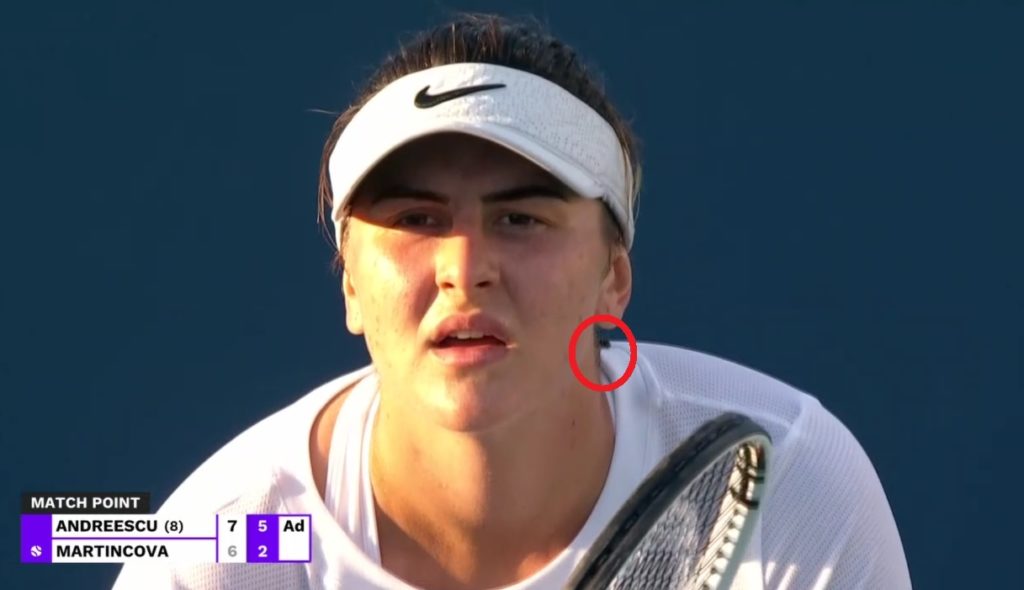
In the seventh game, Andreescu and her unsuspecting doubles partner found their rhythm and ousted Martincova, who walked off the court solo.
Tennis for good
Like so many professional athletes, the members of the WTA and ATP don’t hesitate to step forward when it comes to raising awareness of the principles they believe in.
The most recent example that comes to mind is the one regarding stemming hatred towards any Asian person – or of Asian descent by their parents or grandparents.
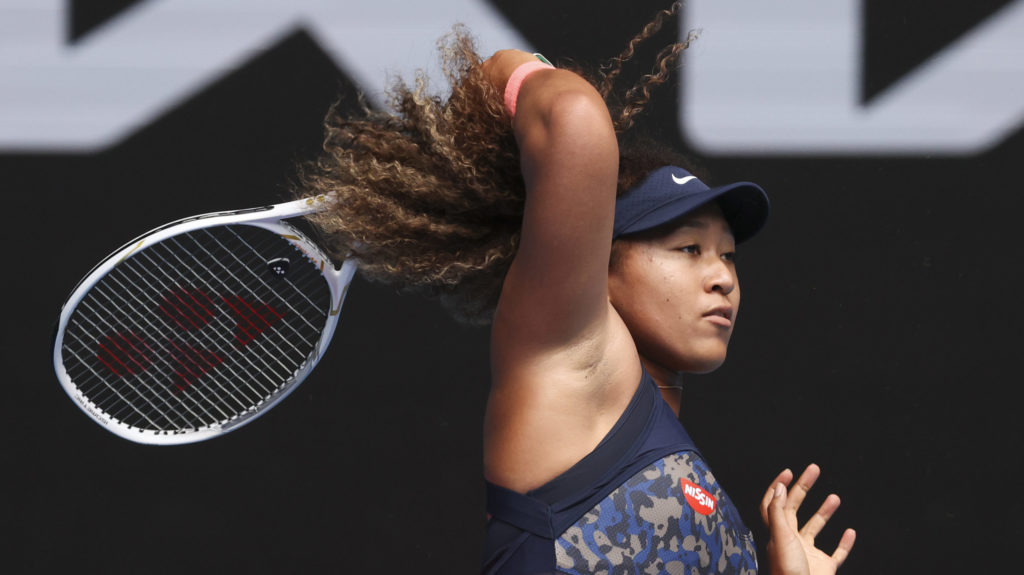
The Stop Asian Hate movement was recently brought to the fore when six women of Asian descent and two other victims were senselessly gunned down in Atlanta on March 16 in the latest episode in a series of tragic events driven by Donald Trump’s doggedness in using the expression China virus in reference to COVID-19.
In Miami, aces of all origins responded to the call to stand against racism and violence and created a video. In it, Naomi Osaka, Kei Nishikori and Yoshihito Nishioka of Japan, Soonwoo Kwon of South Korea, Saisai Zheng of China and Thai-Son Kwiatkowski and Mackenzie McDonald, who are Americans of Asian descent, are joined by a constellation of stars from both circuits, including Canadians Gabriela Dabrowski and Milos Raonic.
For Naomi Osaka, Stop Asian Hate isn’t the first social battle she’s taken up. Her success on the court and commitment to social justice are cementing her brand among the best and brightest in tennis and all of sports.
Eight months ago, in an act of protest that was unprecedented in tennis, the 22-year-old opted out of her semi-final match of the Western & Southern Open at the Billie Jean King National Tennis Center in Flushing Meadows in support of the Black Lives Matter movement to denounce the racial injustice and police violence that was sweeping across the US and the world following the death of George Floyd at the hands of four law enforcement officers. Osaka agreed to return to the competition the next day and walked onto the court wearing a Black Lives Matter t-shirt.
Later in the season, on the very same courts at the US Open, Naomi turned the spotlight on Black Lives Matter once again, when she wore seven different face masks that each named a Black person whose death had been cited in the protests, garnering extensive media coverage from outlets including Time magazine.
Venus fights for gender equality
Naomi Osaka isn’t the only WTA star to stand up for what’s right.
In the twilight of her brilliant career, Venus Williams has set a new goal: equal pay. She recently penned a powerful essay in Vogue magazine that was published just a few days ahead of March 24, Equal Pay Day.

“Throughout my childhood, playing tennis with my sister Serena in our hometown of Compton, California, I always dreamed of winning tournaments like Wimbledon. Then, when I finally got there, I was struck by the inequality. When I won Wimbledon for the first time in 2000, the men’s singles champion received £477,500 while the women’s champion earned £430, 000 [a difference of C$105,000]. From then on, I felt compelled to campaign for equality for women,” she wrote.
Leading with this anecdote, the prestigious Vogue magazine published an open letter from the elder Williams. The article came out days before March 24, which is National Equal Pay Day.
Also committed to the fight for equality is US soccer megastar Megan Rapinoe, who spent Equal Pay Day at a special White House event hosted by President Joe Biden and First Lady Jill Biden.
Buena suerte, Juan Martin !
Juan Martin del Potro has had more than his fair share of injuries. If there were an ATP medal of courage, resilience, perseverance and faith, the Tower of Tandil would be the winner for several years running.

After losing his father in January, he now faces more surgery that will keep him on the sidelines for many months, putting his career, sport and passion on pause.
A chart of his world rankings over the past 12 years would unsettle even the fiercest wolf of Wall Street.
Delpo, who reigned supreme at the 2009 US Open, rose as high as No.4 before his first brush with injury in late 2010 sunk him to No.483 (January 2011). Three and half years later, in 2014, he found his way back to No. 4 but fell again to No. 1045 in 2016. He later skyrocketed to No. 3 in 2018 but dropped down to No. 124 just 15 months later. He is currently World No. 173.
Regardless, his tenacity is admirable. Let’s all wish him the best of luck.
Who needs a backhand, anyway?
We saw Maria Sharapova do it once or twice. When the ball was too far off and she didn’t have enough time to get into a backhand position, the right-hander would hit a forehand with her racquet in her left hand.
Enter 12-year-old switch-hitter Teodor Davidov of the US, who doesn’t need a backhand because he hits forehands ON BOTH SIDES.
How does he serve? The same way!
https://www.facebook.com/watch/?v=293073945152285
The wall, your friend and mine
Gyms and indoor tennis courts reopened on March 26, in Montreal, but making a reservation has been no easy feat.
Nevertheless, COVID-19 has taught us all to be resourceful, and I knew immediately which tennis partner to turn to: my old friend the wall. And I wasn’t alone.
On either side of the main building of the IGA Stadium complex, there is a painted line at net height. This past week (March 19 to 25), as temperatures rose up to 18 degrees, scores of players of all ages were literally hitting the wall.

If you’re looking to boost your game, there’s no better partner. The wall was my very first adversary when I started out at the age of nine, and I still call on it — and all the joy and frustration that comes with it — 55 years later.
You see, the wall never falters. It returns what you serve it. If you fire off a mishit, you’ll get one right back.
To sharpen your reflexes, step up your footwork or find a compact swing to briskly respond to opponents who may be going a little too hard on their offensive game, the wall is the way to go.
No need for a partner or even a court. And good luck finding a more affordable alternative!
Don’t believe me? Just ask Nick Bollettieri, legendary coach of the likes of Agassi, Courier, Seles and Sharapova. A few years back, he had only good things to say about being up against the wall:

Get in touch with me
Email : privard@tenniscanada.com
Twitter : @paul6rivard
Follow all our Canadians in action here.
